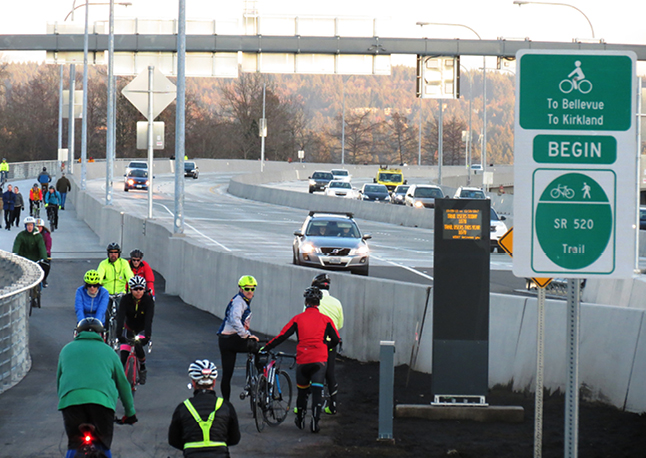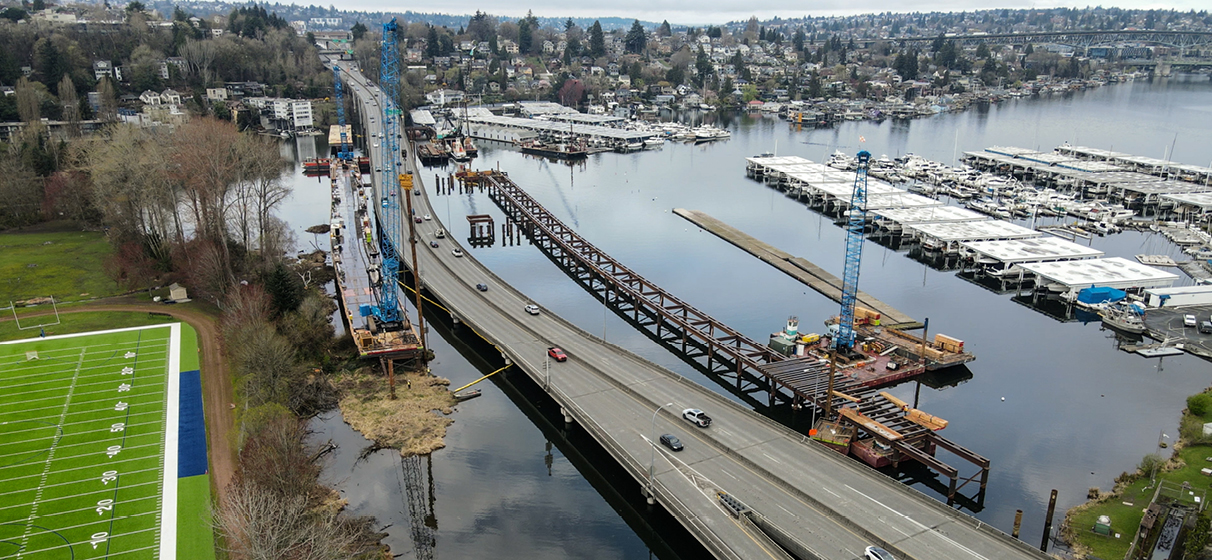The time for smarter, streamlined and digitally integrated infrastructure systems is now. That’s why STV has partnered with ITS America to launch a new thought leadership platform: the Digital Infrastructure Webinar Series. This series continues the conversations we launched last year on roadway infrastructure. This initiative isn’t just about new technology – it’s about a new way of working together.
ITS America and STV are hoping this webinar series will drive national dialogue around corridor-scale solutions, cross-sector coordination and data-driven infrastructure design. As digital systems become just as critical as asphalt and concrete, the role of AEC firms partnering with agencies, tech companies and other innovators must evolve.
“Beyond the State Line: Smart Freight, Smarter Corridors,” the first installment in the series, discussed a powerful case study on truck parking availability systems (TPAS) along the I-10 corridor – a major east-west route that stretches from Santa Monica, California, to Jacksonville, Florida.
I was joined by Dr. Jianming Ma, who is the traffic management section director at the Texas Department of Transportation (TxDOT), Jonathan Fell, PE, PTOE, the assistant southwest district engineer for Arizona Department of Transportation (ADOT) and Mark Savage, director of connected truck solutions at Drivewyze, a leading connected truck platform provider. Together, we examined how demands on supply chains and for the faster delivery of goods are increasing daily. Yet, the freight industry is challenged by complex freight corridors and a lack of easy parking for the trucks that transport products from supplier to consumer.
A National Problem, A Corridor-Wide Solution
For years, truck drivers have cited the lack of safe, available parking as their number one concern. According to national surveys, nearly 80% of drivers spend more than 30 minutes each day searching for a place to rest – costing the freight industry an estimated $11 billion annually in lost productivity, safety violations and operational inefficiencies.
The I-10 TPAS project, showcased in the webinar, responds to this crisis with a model that’s not only technologically advanced but institutionally transformative. With support from the U.S. Department of Transportation (U.S. DOT) and a $6.85 million federal grant, four states – Texas, New Mexico, Arizona and California – have united under the I-10 Corridor Coalition to deploy real-time truck parking data across 37 public rest areas.
This is not a series of disconnected state initiatives. It’s a coordinated, interoperable system built on shared standards, public-private APIs, and joint governance, enabled by stakeholder collaboration at every level.
Federal, State, and Private: All Hands on Deck
While moderating the webinar, I pointed out that this series is a call to overcome siloed decision-making in favor of shared systems thinking. During our discussion, each of our speakers detailed how their agency or organization plays a unique role in this cooperative model:
- TxDOT is deploying radar and video analytics at rest areas and pushing availability data through DriveTexas.org and open APIs.
- ADOT uses space-by-space video detection, integrating availability into AZ511 and a new third-party mobile app called Streetline ParkerTruck.
- Drivewyze delivers this public data directly to drivers’ in-cab electronic logging devices, ensuring alerts are timely, non-distracting, and integrated with everyday driver behavior.
This layered approach shows how digital infrastructure is about more than just hardware – it’s about interfaces, standards and shared stewardship of public data. State agencies can maintain technical flexibility while committing to shared user experiences and data standards. Each DOT implemented a detection system suited to their geography and infrastructure, but all agreed to common signage design, dynamic data feeds updated every five minutes and a consistent approach to driver-facing information.
That balance of local control and national interoperability reflects the very spirit of the U.S. DOT’s Roadway Digital Infrastructure Strategy – and why the National Operations Data Exchange framework is gaining traction.
What’s Next for Truck Parking Trends?
The current rollout of TPAS along I-10 is just the beginning. The technical and institutional foundation laid by this coalition creates opportunities for future enhancements:
- Predictive analytics for parking availability based on traffic trends
- Integration with weather alerts and traffic incident management
- Potential reservation systems—particularly if private truck stops join the data-sharing ecosystem
As Dr. Ma said, the public sector owns only 10% of truck parking spaces in Texas. That means scaling these efforts nationwide will require ongoing partnership with private operators, many of whom are already expressing interest in contributing to the open data environment.
If you’re interested in these conversations about digital infrastructure, STV and ITS America are hosting several webinars over the next few months.











